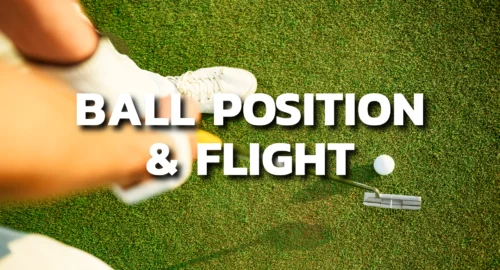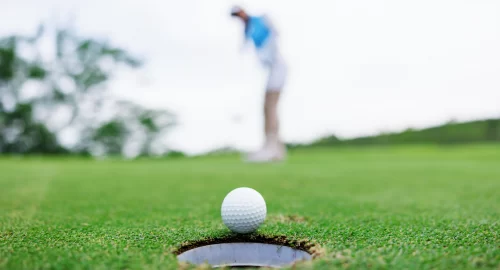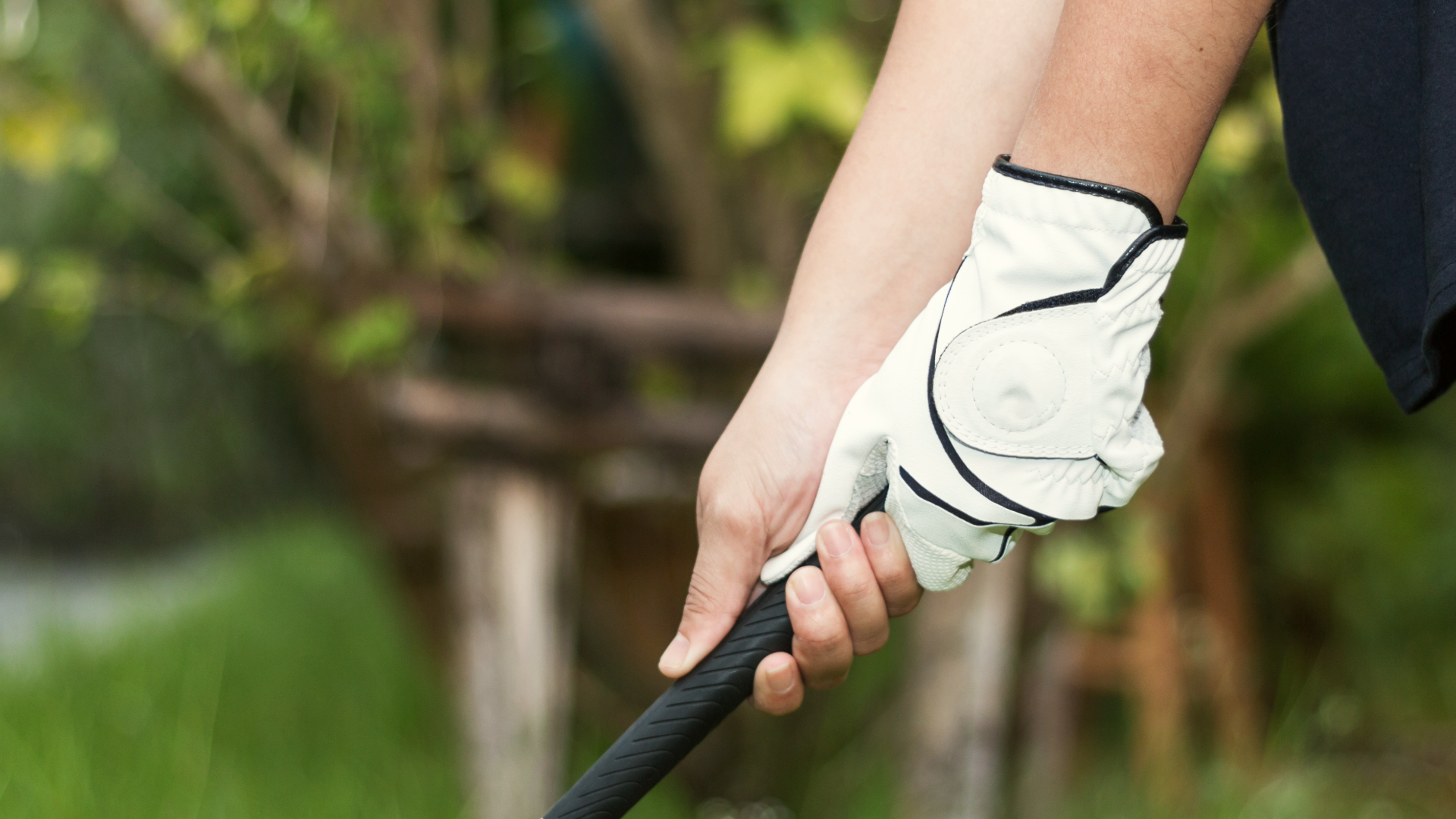
If you’re like a lot of beginner golfers, chances are you’ve thought about the best way to hold a golf club, and how your grip affects your golf swing. A solid grip forms the foundation of a consistent golf swing and is the cause of many frustrating errors on the course.
There are three main types of golf grips we’ll go over, along with a step-by-step process to hold the club.
Setting up the fundamentals in the beginning (or going back to basics if you’re returning to the sport) is crucial, so if you’re a beginner golfer, you might not want to develop a grip like Tiger Woods just yet.
How to Grip a Golf Club: Beginners Easy Guide
Your grip can directly impact your takeaway, ball flight (straight, slice, or hook), total distance, and a lot more. The sooner you develop a consistent golf grip, the sooner you can play better than ever. For instruction’s sake, we’ll assume everything today is for right-handed golfers. For lefties, simply switch the orientation mentioned to accommodate for yourself!
Before getting into the three types of grips, let’s start with the ideal grip. The one that every golf instructor wants players to have. This grip will set you up to build a consistent golf swing, maximize distance, and hit it straight every time.
Start by grabbing a golf club and placing it in the fingers of your left hand. Hold it about a half inch above the end of the grip in your fingers, not your palm.
Wrap your fingers around the club and place your left thumb down the right side of the grip. You should be able to spot 2.5 knuckles on your left hand.
Instructors like to think about the “V’s” that are formed between your index finger and left thumb. This V should point toward the right side of your head. If it’s a weak grip, it’ll point to the left side and if it’s a strong grip, it’ll point well to the right of your head (more on these grips coming up).
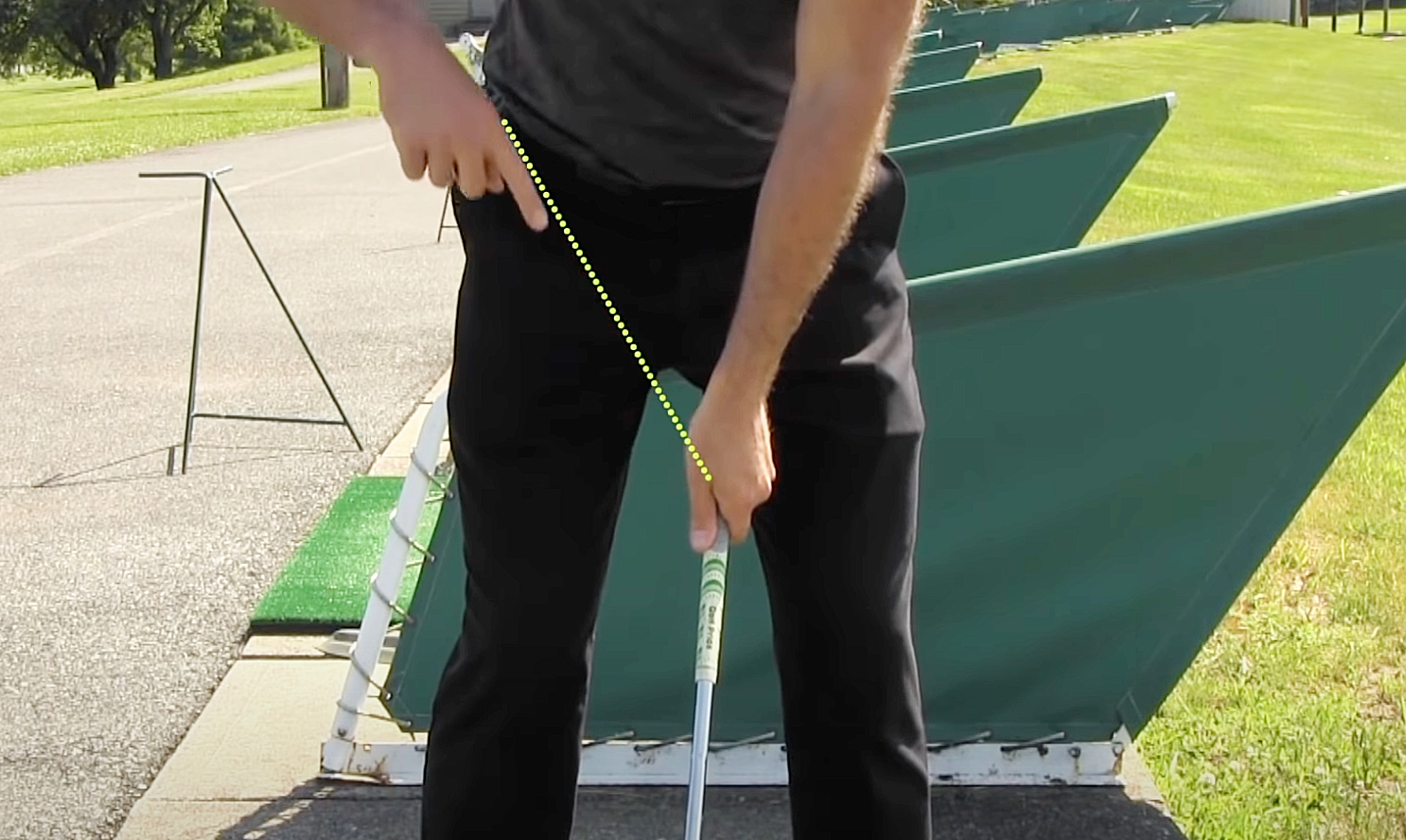
Once your left hand is in a good position, add your right hand. Start by placing your right pinky on top of your left index finger and wrap the rest of your fingers around the grip.
Similar to the left hand, you want to look at the position of the V’s – this time between your right index finger and thumb. It should point to your chin – otherwise, it’s in a weak or strong position.
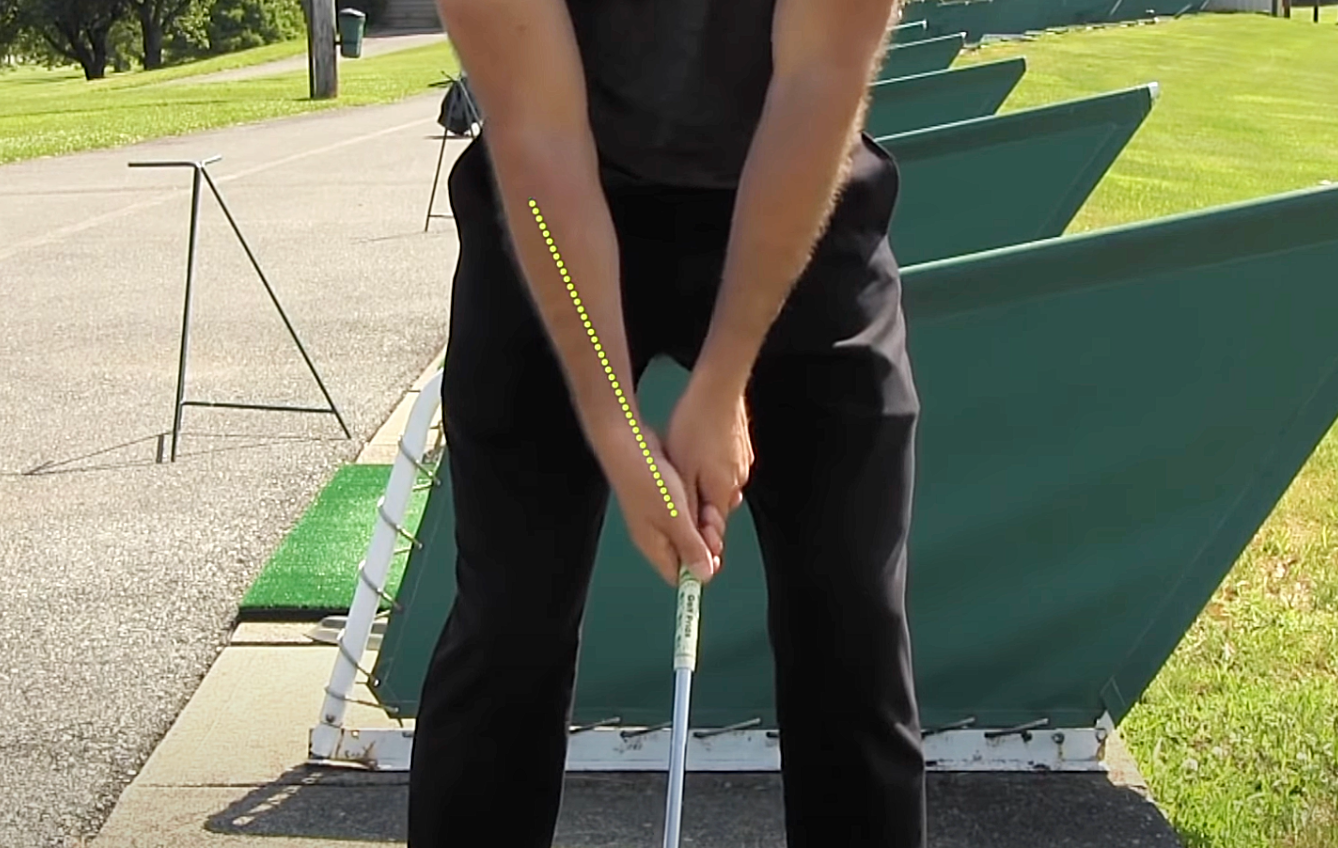
Overlap vs. Interlock
This grip we just covered is considered an overlap grip (also referred to as a Vardon grip, after the late Harry Vardon). This is when your right hand goes over the left without any fingers connecting. It’s generally assumed in the golf world that about 98% of PGA Tour players use this grip.
However, a small percentage of golfers – including some of the greatest, like Tiger Woods and Jack Nicklaus – interlock fingers. Instead of overlapping their right pinky on top of the left index finger, they interlock them instead.
This style is better for people with smaller hands, especially female golfers and juniors. However, as mentioned, it can also work for some of the best in the game. However, it’s not recommended because it can lead to excess grip pressure, blisters, and overall a more uncomfortable feeling.
For 98% of golfers, we recommend an overlap grip as it’s easy to master, can improve rhythm, unify the hands, and reduces excess hand movement. Ultimately, it can help you develop a more consistent, repeatable golf swing.
Grip Pressure
It may seem simple, but we can’t stress how important grip pressure it is for any type of golf swing. Interlocking or overlapping, weak or strong, grip pressure can make a big impact on your ball striking.
Think of grip pressure as a scale from 1-10; one being so light you are barely touching the club. Ten being so firm that it feels like you’re squeezing the club to death.
For most full-swing golf shots, you want a grip pressure in the 4-5 range.
If you grip it too loose, you’ll likely lose control of the club during the swing, and that’s no good! However if your grip is too tight, you’ll have extra tension in your hands, forearms, and upper body which can actually negatively impact your total distance.
Sometimes you’ll need more grip pressure – for example when you’re hitting from the rough. Since the thick grass will twist the club, you’ll want more pressure to reduce the club from rotating at impact. Other times – like putting – you’ll want less grip pressure to improve your feel on the greens and reduce the risk of over shooting.
Glove or No Glove?
Finally, a lot of golfers ask themselves: to wear a golf glove or not?
It’s a good question, as gloves are somewhat expensive and need to be replaced often. It’s also important to note if you do choose, you wear the glove on your non-dominant hand (left hand for right-handed golfers and vice-versa).
In general, we do recommend the majority of players to wear gloves. They can help provide a better grip, maintain grip pressure throughout the swing, avoid blisters, and make it easier to play in various weather conditions.
Three Types of Golf Grips
There are three types of grip – weak, strong, or neutral. Each position is determined by your hand placement on the club, which can have a direct impact on your takeaway, wrist hinge, swing plane, and shot shape.
Neutral Grip
A neutral golf grip, which we demonstrated above, is generally the perfect mix of power and accuracy; it’s also what most instructors tend to teach. This requires no extra manipulation of the body or hands, and is the gold standard for most golf swings.
Weak Grip
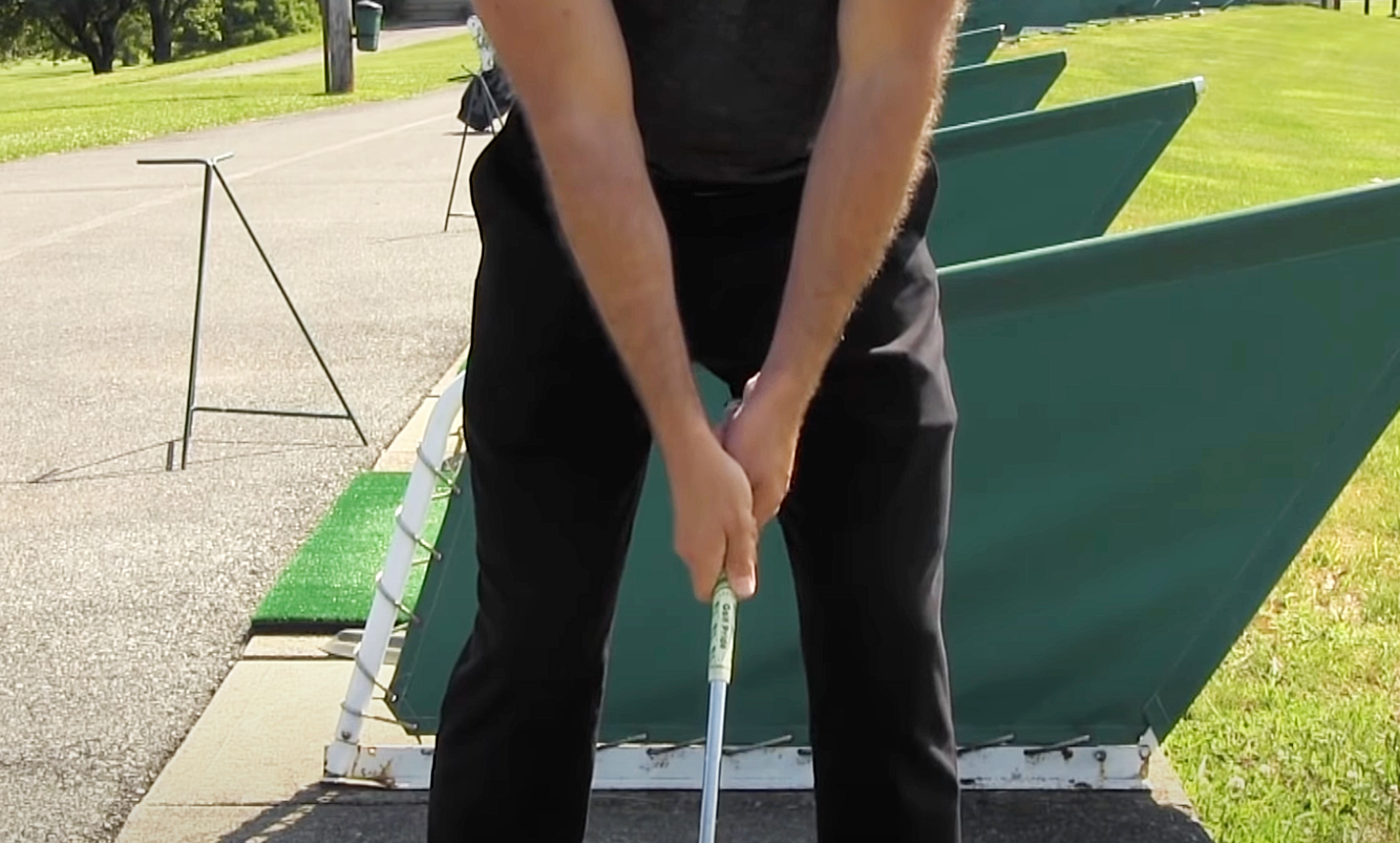
However, a weak grip (shown above) is the most common position for amateur golfers. This is when your left hand is more under the club and your right hand is more over the club. But just because it’s popular, doesn’t mean it’s recommended.
Why?
Because a weak grip leads to a loss of distance and makes it much easier to hit a slice. Which not only kills distance off the tee but also puts you in a lot of bad spots (like behind trees, fairway bunkers, etc.).
Strong Grip
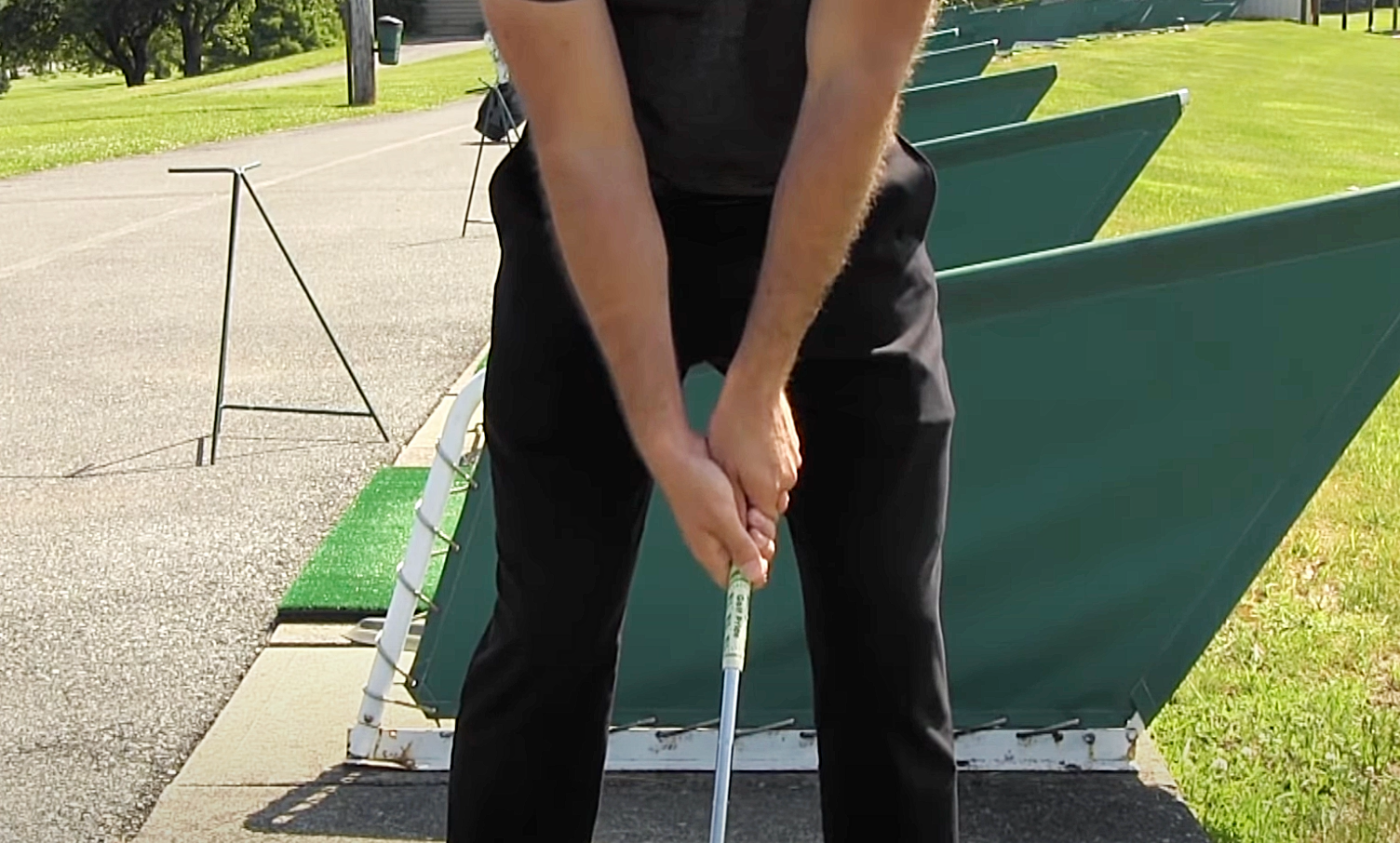
The opposite of that would be a strong grip (shown above), which is when your left hand is over the club and your right hand is more so under the club. If you have a strong left-hand grip, you’ll likely see three or more knuckles when looking down at address position.
The amount of knuckles you see when looking down at your hands is a good indicator of your grip strength. The more knuckle, the stronger the grip.
Gripping the club in a strong position makes it easier to compress the ball but also invites a draw or hook shot more often. We’d argue a strong position is better than a weak one, but ideally a neutral grip is best.
If you have a weak or strong grip now, changing it will take some time, especially if you’ve been playing a while. While grip changes aren’t easy to make, they’re worth it for the long run.
Does Your Grip Need to Change for the Short Game?
Now that we’ve covered the fundamentals of a good grip, let’s get into a specific scenario you may find yourself in when golfing. A lot of golfers wonder if they should use a different grip when it comes to putting.
For your short game – which includes bunkers, pitching, and chipping – you’ll use the same grip as a full swing, but with a few minor adjustments. As we mentioned in the grip pressure section, you can slightly lessen your grip pressure when putting on the green, and you can also choke up on the grip, making the club shorter and easier to control since you don’t need a full swing.
The most common putting grip on the PGA Tour is the reverse overlap (aka conventional putting grip).
The second most popular type of putting grip is known as left-hand low or cross-handed putting grip. This is where your left hand is lower on the grip (for right-handed golfers) and puts the left hand in control. You may have heard of some other putting grips such as the claw, prayer, and arm lock grips – but we don’t recommend these for beginners.
Take What You’ve Learned, Grip the Club, and Go!
Your grip is the foundation for the rest of your golf swing. If you have an incorrect grip it can lead to a poor takeaway, slices or hooks, inconsistent contact, and all kinds of other issues.
Master your grip and keep checking it in practice, regardless of your skill level. This is something that the best players in the world are working on and something you should too.
If you’re looking for more advanced tutorials, want extra training from professionals, or want to master a specific skill, be sure to check out our large offering of training programs to help get you where you want to be.
